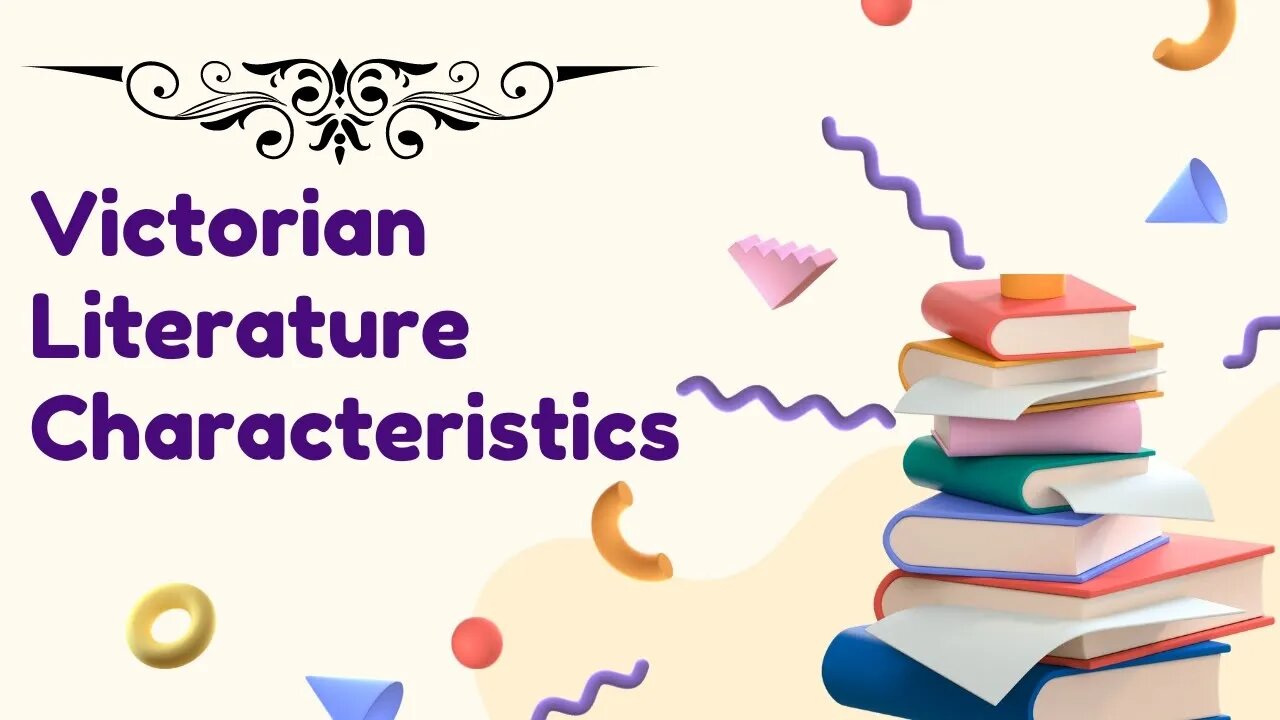Premium Only Content

Victorian Literature Characteristics
Welcome to our explainer video on Victorian Literature Characteristics. In this video, we'll explore the key features of literature during the Victorian era in the simplest language possible. So, let's dive in!
Realism and Social Issues.
The Victorian era refers to the period in history when Queen Victoria ruled England, from 1837 to 1901. During this time, literature played a significant role in reflecting the values, concerns, and ideas of society.
One of the characteristics of Victorian literature was its focus on realism. Victorian writers wanted to depict life as it truly was, with all its struggles, hardships, and inequalities. They aimed to portray the social and moral issues of their time.
Victorian literature often tackled themes such as poverty, class divisions, industrialization, and social reforms. Writers shed light on the harsh living conditions of the working class and advocated for social change.
Morality and Virtue.
Another important aspect of Victorian literature was the emphasis on morality and virtue. Many writers believed in upholding high moral standards and portrayed characters who faced moral dilemmas and made ethical choices.
Authors like Charles Dickens highlighted the importance of compassion, justice, and kindness through their works. They aimed to create a sense of empathy among readers and inspire them to make positive changes in society.
Exploration of Cultures.
Victorian literature was not limited to England alone. It explored the vastness of the British Empire, showcasing exotic settings and different cultures. Writers like Rudyard Kipling and Robert Louis Stevenson transported readers to far-off lands through their stories.
Women's Perspectives.
Additionally, Victorian literature often reflected the changing role of women in society. Many female writers emerged during this era, expressing their thoughts and experiences. They challenged traditional gender roles and advocated for women's rights.
Female authors like Charlotte Brontë and Elizabeth Gaskell provided powerful insights into the struggles and aspirations of women, paving the way for greater gender equality.
Descriptive Language and Symbolism.
Lastly, Victorian literature placed a strong emphasis on detailed descriptions and symbolism. Writers used vivid language to paint a picture in the readers' minds. Symbolism was employed to convey deeper meanings and explore complex emotions.
Conclusion.
And there you have it! These are some of the key characteristics of Victorian literature. Realism, morality, social awareness, exploration of different cultures, women's perspectives, and rich descriptions were all integral to this era of literary works.
We hope you enjoyed this journey through Victorian literature characteristics. Remember, the works of that era continue to inspire and educate readers even today. Thank you for watching!
00:00 - Introduction
00:14 - Realism and Social Issues
01:06 - Morality and Virtue
01:38 - Exploration of Cultures
01:59 - Women's Perspectives
02:29 - Descriptive Language and Symbolism
02:49 - Conclusion
-
 23:28
23:28
DeVory Darkins
9 hours ago $10.50 earnedTrump official ANNIHILATES Democrats in heated debate as CNN gets caught sympathizing with criminals
21.3K64 -
 1:02:26
1:02:26
The Nick DiPaolo Show Channel
12 hours agoPOC Murders Another White Woman | The Nick Di Paolo Show #1790
57.5K69 -
 2:04:29
2:04:29
Inverted World Live
8 hours agoNew UFO Hearing Testimony: Lockheed Martin Has Alien Technology | Ep. 105
69.6K8 -
 5:00:59
5:00:59
Akademiks
5 hours agoYNW Melly MIGHT BE COOKED! Co-D TELLLING? 6ix9ine vs Young Thug . Drake vs Kaicenat? HOLLY
34.5K1 -
 4:46:45
4:46:45
Drew Hernandez
12 hours agoHORRIFYING: FULL FOOTAGE OF IRYNA ZARUTSKA MURDER HAS BEEN RELEASED
36.4K32 -
 2:42:09
2:42:09
TimcastIRL
7 hours agoNATO Scramble Air Force Over Russian Incursion Into Poland, HIGH ALERT Reported | Timcast IRL
183K106 -
 25:46
25:46
Man in America
11 hours agoALERT: Gold Prices FLASH OMINOUS WARNING for the Dollar—Are You READY??
39.8K17 -
 58:27
58:27
Sarah Westall
7 hours agoWar Exploding Around the World: Nepal, Israel, Qatar, Venezuela, Thailand, more... w/ Michael Yon
44.5K14 -

SpartakusLIVE
9 hours agoThe Most INSANE Snipes EVER || Solo to Duos w/ StevieT - PUBG or Mordor Later?!
59K1 -
 1:11:40
1:11:40
Flyover Conservatives
18 hours agoThe Truth About Israel & End Times Nobody Wants to Say - Phil Hotsenpiller | FOC Show
39.7K12